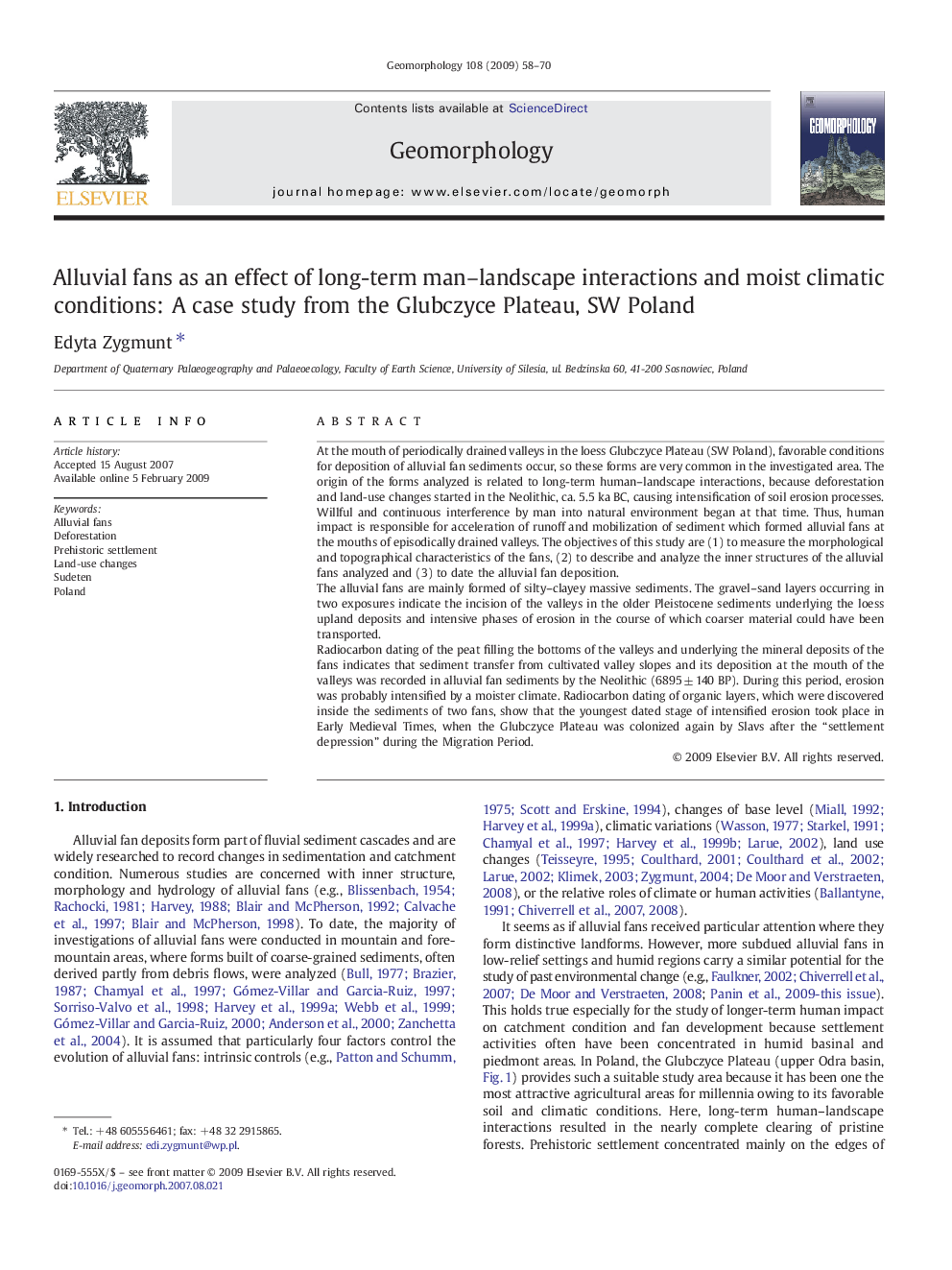| کد مقاله | کد نشریه | سال انتشار | مقاله انگلیسی | نسخه تمام متن |
|---|---|---|---|---|
| 4686431 | 1635542 | 2009 | 13 صفحه PDF | دانلود رایگان |

At the mouth of periodically drained valleys in the loess Glubczyce Plateau (SW Poland), favorable conditions for deposition of alluvial fan sediments occur, so these forms are very common in the investigated area. The origin of the forms analyzed is related to long-term human–landscape interactions, because deforestation and land-use changes started in the Neolithic, ca. 5.5 ka BC, causing intensification of soil erosion processes. Willful and continuous interference by man into natural environment began at that time. Thus, human impact is responsible for acceleration of runoff and mobilization of sediment which formed alluvial fans at the mouths of episodically drained valleys. The objectives of this study are (1) to measure the morphological and topographical characteristics of the fans, (2) to describe and analyze the inner structures of the alluvial fans analyzed and (3) to date the alluvial fan deposition.The alluvial fans are mainly formed of silty–clayey massive sediments. The gravel–sand layers occurring in two exposures indicate the incision of the valleys in the older Pleistocene sediments underlying the loess upland deposits and intensive phases of erosion in the course of which coarser material could have been transported.Radiocarbon dating of the peat filling the bottoms of the valleys and underlying the mineral deposits of the fans indicates that sediment transfer from cultivated valley slopes and its deposition at the mouth of the valleys was recorded in alluvial fan sediments by the Neolithic (6895 ± 140 BP). During this period, erosion was probably intensified by a moister climate. Radiocarbon dating of organic layers, which were discovered inside the sediments of two fans, show that the youngest dated stage of intensified erosion took place in Early Medieval Times, when the Glubczyce Plateau was colonized again by Slavs after the “settlement depression” during the Migration Period.
Journal: Geomorphology - Volume 108, Issues 1–2, 1 July 2009, Pages 58–70